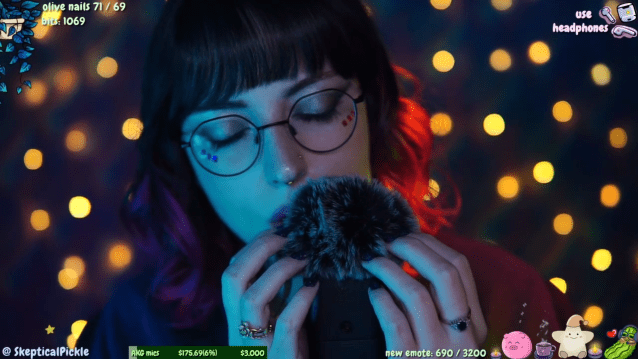Twitch is the biggest streaming platform in the world, and it harbors many people who wish to maximize the platform’s reach by piquing the many interests of the audience and thus end up spawning bizarre and controversial Twitch metas ranging from innocently weird to completely insane.
Skin gambling

Gambling is considered a vice for a reason. It can cause a person to become so deeply invested in the activity that they begin doing it irresponsibly, potentially putting their livelihood at stake. Twitch streamers have been doing live gambling since time immemorial, and the act is typically limited to video game skins, particularly those found in Counter-Strike. Skin gambling websites have also become involved, investing millions of dollars into these streamers to just keep doing it.
Gambling on Twitch and in video games has attracted worldwide attention. From scams to fears of children being influenced to start gambling online to streamers gambling on their own websites without disclosing it, the skins gambling meta on Twitch has been a wild one. It’s grown substantially over the years, and though there have been attempts to curb it, it is still ongoing. The worst offenders have moved on from Twitch, however, finding refuge on streaming platforms such as Kick, which itself is being funded by a gambling organization. A wild ride.
Hot tubs

Nothing attracts viewers like nudity, partial or whole. Hot tub streams on Twitch became more than just a fad when streamers figured out they could strip to swimsuits if there was a pool in the frame somewhere. This borderline exploit, which pushed the limits of the Twitch Terms of Service, had grown so exponentially that Twitch itself created several new categories just to contain its spread into the Just Chatting part of the platform.
Discussions emerged across the streaming world on the ethics of hot tub and sexually implicit or explicit streams, as Twitch is primarily used by a young audience. Hot tub streams, though not necessarily sexual in nature, often were and played a significant part in the emergence of what would later be known as Twitch’s most insane “black bars” meta.
Black bars Twitch meta

The black bars Twitch meta came immediately prior to and after Twitch’s updates on sexual content policies. Having made them more lax, Twitch unleashed a flood of sexually implicit and explicit content that conquered the platform whole in a matter of a day. One of the two most prominent metas that emerged, and which still linger currently, is the black bars meta, where streamers cover their private parts to simulate “implied nudity.” Twitch streamer Morgpie spearheaded the meta and was the reason behind Twitch trying to curb it by… well, allowing it to happen.
Disgraced YouTuber boogie2988, of all people, participated in the meta and, in classic boogie fashion, somehow made it worse by stripping naked and removing the black bar from his stream. This prompted Twitch to swiftly ban him, as they had banned Morgpie and numerous others to prevent the meta from spreading after Twitch decided to roll back their sexual content changes. The meta hasn’t disappeared completely, and the period can safely be named the craziest two days in Twitch history.
Artistic nudity

Also part of the period when Twitch pushed for relaxed sexual content policies, artistic nudity was just as bad or even worse than the black bars meta. It overtook a particular part of Twitch, the Art category, where streamers were involved in drawing sexually explicit characters and other content as either parodies or original creations. This saw the Art category skyrocket in terms of viewership, as its peak numbers increased tenfold in just 24 hours. However, when Twitch rolled back the changes, the Art category lost 90 percent of its viewers equally fast. The power of sexual content is beyond all reckoning, it seems.
ASMR streams

One of the metas that will never cease to be is certainly ASMR streams. ASMR, standing for autonomous sensory meridian response, is a method of speaking in a soothing manner for the purpose of either relaxing someone or helping them fall asleep. Naturally, some streamers took this to a new extreme by mixing in sexual characteristics and thus creating a veil of stigma surrounding the ASMR streams. A prominent ASMR controversy was the “ear-licking meta,” and I can’t say I don’t understand the criticism.
However, ASMR has existed for years before any other meta and not just on Twitch and there are numerous creators out there who have kept ASMR in its intended form. But as with all things that get stained with a bad reputation once, ASMR streams attracted a lot of criticism like hot tub streams, and they both continue to be present on the platform.
Restreaming TV shows

Nothing like infringing on copyrights to rake in the views. Twitch streamers figured out they could drop the effort altogether and host watch parties of popular TV shows where them and their audiences could enjoy some actual content. This lasted for a while and brought in so many viewers that even the most prominent Twitch streamers joined in on the fun.
Pokimane, for example, streamed Avatar: The Last Airbender on her channel, which proves that the meta did indeed have a lot of magnetism around it. However, in the digital age, the copyright holders had none of it and cut the meta short by issuing tons of DMCA claims against streamers who broadcasted copyrighted content. But even though it ended on Twitch, it lives on through Kick, where sports matches, movies, TV shows, and other media have been livestreamed by big-name streamers on more than one occasion.












Published: Jan 21, 2024 02:09 pm